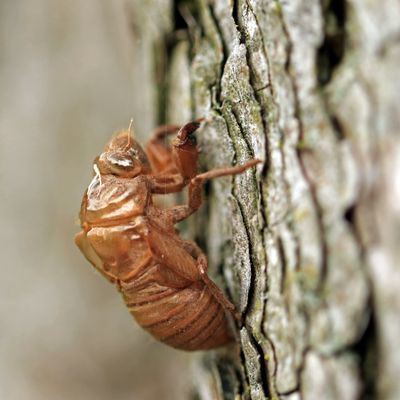
At last, the cicadas are here. After residing deep underground for nearly two decades, trillions of winged insects are beginning to emerge from their cool, subterranean burrows across the eastern United States and into the open air. While not all cicadas appear so rarely, this incoming mass of insects belongs to a group known as Brood X, which only surfaces every 17 years. Once aboveground, the insects — recognizable by their droning mating call and the crunchy, delicate exoskeleton they cast off while molting — have but one earthly objective: to fuck as much as possible.
How well-timed that we will usher in our horny pandemic summer alongside such famously horny insects! Here’s everything you need to know about the noisy winged bugs, from where they’ll be lurking to how long they’ll be among us.
What should we know about the Brood X cicadas?
Across the world, there are nearly 3,400 species of cicadas, according to Scientific American. The incoming cicadas belong to the grouping Brood X, which emerges every 17 years. As entomologist Eric Day of Virginia Polytechnic Institute and State University put it to CNN, their existence is an “unusual biological phenomenon,” and we’re about to witness “an amazingly big, big show.”
Wait, what has this generation of Brood X been doing since 2004?
Seventeen years ago, when George W. Bush was still president and Bennifer was in its first iteration — and when, crucially, the last generation of Brood X cicadas surfaced to mate — the new batch of cicadas began their lives as eggs, laid in tree branches and shrubs. Not long after, these eggs hatched nymphs, which fell to the ground and burrowed deep into the soil. For the past 17 years, these nymphs have lived a seemingly chill existence, subsisting off sap from tree roots and awaiting the day they’ll emerge to follow in their parents’ footsteps.
So when and where will the Brood X cicadas surface?
Brood X is also known as the Great Eastern Brood, and its geographical range spans from Tennessee to New York. While scientists debate Brood X’s precise range, per CNN, entomologist Gene Kritsky says we can expect to see them in 14 states plus Washington, D.C.
And some are already here. Anywhere the soil temperature has already reached 64 degrees, the exact temperature at which cicadas decide to vacate their longtime dwelling, they are likely present. Right now, they’re mainly in the eastern South — so, Georgia, Tennessee, North Carolina, and Virginia. However, per the general consensus among scientists, we’re about to see them in droves across the eastern U.S. Typically, they surface en masse during the second week of May.
What will they do once they emerge?
Once they surface, cicadas have a one-track mind. “Their only purpose among us is to mate,” Margaret Renki, author of Late Migrations: A Natural History of Love and Loss, writes in a New York Times editorial. In fact, the insect’s characteristic buzzing is a mating call emitted by males.
“It’s all boys calling girls,” Day told CNN. “First you get a few here and there, then what happens is they start chorusing — there’s so many of them that the cicada calls all combine in this huge chorus.”
Should we be worried?
If you’re wondering whether cicadas pose any sort of threat to humans, there’s no need to worry. While cicadas are sometimes confused with locusts, which are extremely destructive, they are largely harmless; they neither bite nor sting, and they won’t hurt your pet if they decide to snack on a few. (In fact, humans can and do eat cicadas.) Most likely, if you live in Brood X territory, your main contact with them will be through their symphonic buzzing or the paper-thin shells the nymphs shed before mating.
How long will they be here?
Only about five to six weeks, once they’re done mating. At that point, they’ll fall to the ground, as will the newly hatched nymphs laid by the females. Then, those cicadas will emerge again 17 years, so 2038 — a point too far in the future for me to fathom at this current moment. Anyway, see y’all then!

